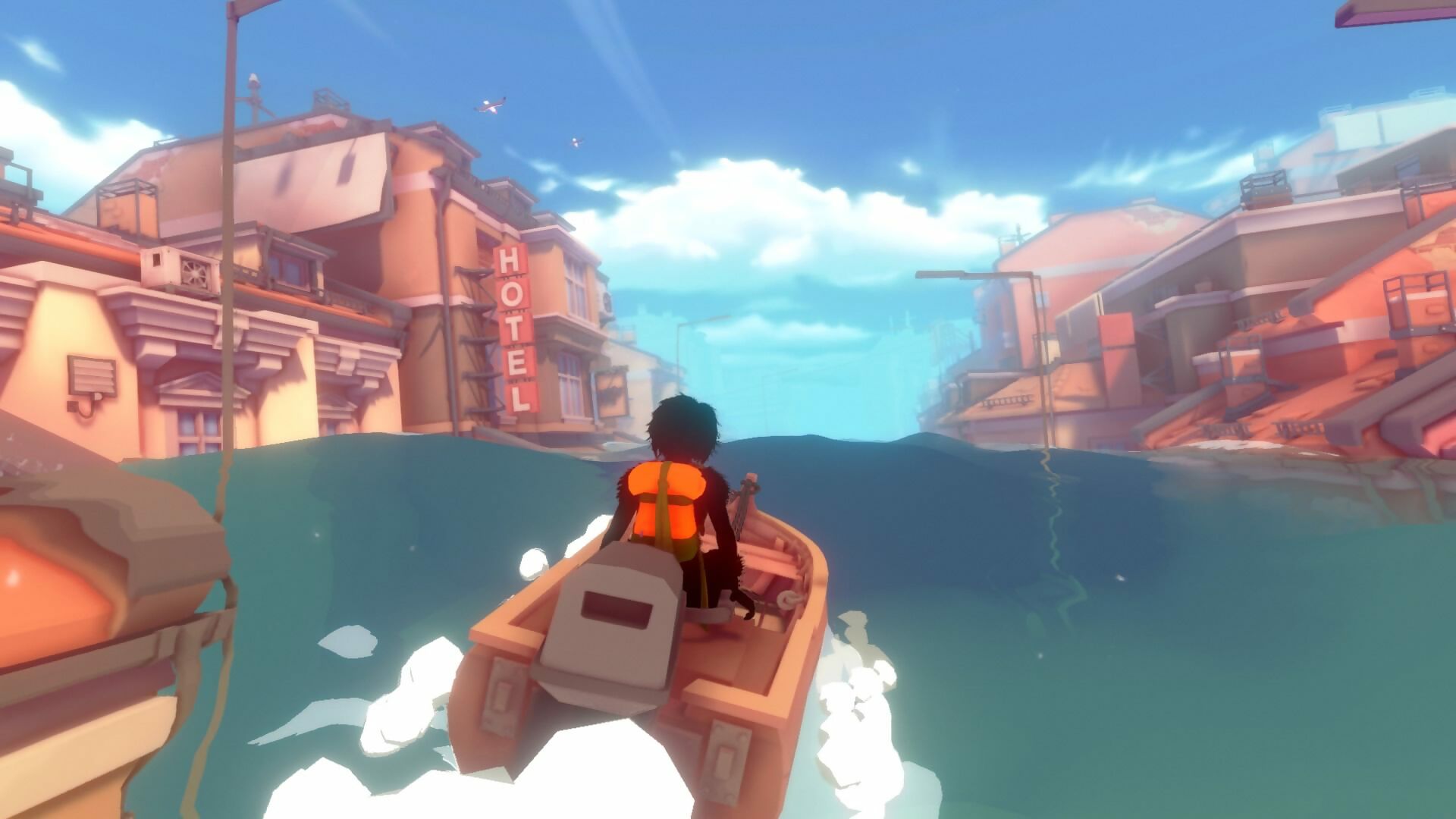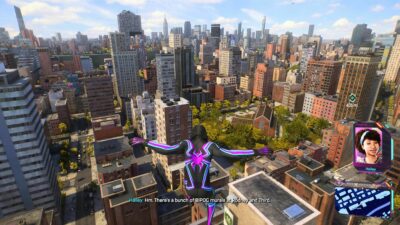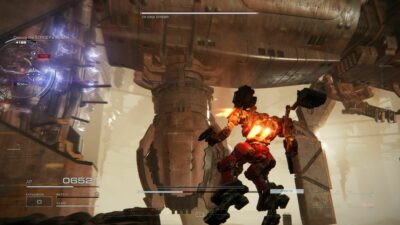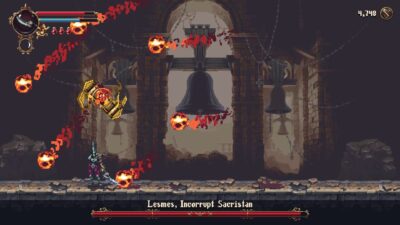
You’re never alone when you’ve got your inner demons in the lonely adventure, Sea of Solitude. Here’s our review…
Before you start Sea of Solitude, it tells you its aims in no uncertain terms. A message from creator Cornelia Geppert tells you that this is “a personal project about loneliness” and “what it means to be human and live with all of life’s ups and downs.” It’s an apt introduction to a game that’s committed to confronting sensitive topics, but spells them out a little too bluntly.
The first thing you hear as the prologue begins is the main character, a young woman named Kay, lamenting her sense of isolation, despite the friends and family around her. Then she wakes up in a tiny boat, alone in a vast expanse of water beneath a black sky, the rain battering down. Progress through this reflection of Kay’s mental state is all about light. You soon gain the ability to shoot flares to pinpoint the way forward, and clear areas of ‘corruption’ to bathe your surroundings in sunshine.
Around and beneath you, always partially submerged, is a desolate town, and before long you’re jumping ashore to clamber over its pastel apartment blocks and hotels. As the boat is unable to access some areas, you’ll have to swim between the concrete peaks jutting above the surface. With the dark comes a huge sea monster, circling like a hungry shark and turning each dip into a panicked dash. In the light, you take your time to look around, enjoy the warmth, and seek out collectables.
The crux is how quickly conditions can change. At any moment, day can return to night, or the sea can rise or sink to reconstruct the landscape, often bringing forth a new monster. With these shifts, the town has an almost dreamlike ability to rework itself and reveal new locations in disorientating loops. You travel far away into a structure that you hadn’t noticed before, only for it to be swallowed again and lost forever as you exit, somehow depositing you back at a central landmark. It’s impossible to gauge the scale of the place, or whether the structures themselves are moving under the waves.
For a game about life’s ups and downs, it’s an exquisite metaphor, and a great base to explore themes such as bullying, depression, and, of course, loneliness. Kay feels adrift in her life, lacking a singular sense of direction, tossed around by unstable relationships and self-doubt. As the water surges, she feels flooded, out of her depth; as it falls, she feels stranded but also on solid ground. That huge body of liquid is a temperamental character, threatening to engulf you one moment, only to recede in the next and uncover a new path.
There’s complexity here too. Different weather conditions symbolise different emotional states, such as the grey fog that turns water to suffocating mud. And even solitude itself isn’t always expressed as painful loneliness. When you’re wandering sunlit streets or floating under blue skies towards a distant building, there’s a wonderful serenity. You also learn that the problem relationships in Kay’s life are as likely to require more space as more intimacy. There’s no universal answer. All Kay can do is keep trying and learn to accept her mistakes.
It’s a shame that Sea of Solitude has a habit of smothering its metaphors. Kay talks a lot, and the chatter between her and the monsters is often needlessly literal. “You only think about yourself”; “You never do anything,” shouts a shelled fiend that embodies her inner fear. Another sad monster, representing her distant brother, keeps moving away as she draws near. “Why won’t he let me get close?” Kay asks, in case you’d missed the obvious. It doesn’t help that the voiceovers are stilted and unconvincingly emotive, or even out of sync with the action.
As the game delves deeper into Kay’s relationships, it relies more on chunks of overlaid dialogue. These repressed memories and past revelations depict very real experiences, and may well touch a nerve with anyone who has gone through similar problems, but they start to invade the game space. Whereas some sections cleverly represent themes through environment design and forms of interaction, others fill time with generic tasks while the monsters work through their issues.
It would miss the point to want greater depth or challenge, but certain areas need something more meaningful to do. It’s symptomatic of a rawness in Sea of Solitude that conveys its passion, but could still do with some refinement. An ability to interact with objects, for example, is completely forgotten for long stretches of the game, when it might have been more gainfully employed. And there’s some clumsy objective design, like when you’re left free to explore an area before you’ve activated the trigger that fills it with stuff to discover, which drains the game’s fluency.
What you’ll hopefully remember most is the town, the sea, and the monsters. The combination of the changing geography and the distinctive forms of its shadowy inhabitants gives each part of the game its own emotional note. In its forms of communication, Sea of Solitude can’t match the quiet understatement of Rime or the dense craft of Celeste, but there are times when it comes close, and it’s a heartfelt exploration of difficult themes.
Highlight
In one sequence, Kay is forced to climb the inside of a crumbling tower, the light pulsing on and off as air vents flare up with the breath of an angry monster. It’s Sea of Solitude’s most traditionally game-like section, but the simple idea of being repelled and plunged into darkness as you struggle to ascend makes it the most evocative.
Verdict
A striking study of loneliness that could have done with a lighter touch.
62%
Genre: Narrative adventure
Format: PS4 (tested)/PC/XBO
Developer: Jo-Mei Games
Publisher: EA
Price: £15.99
Release: Out now





